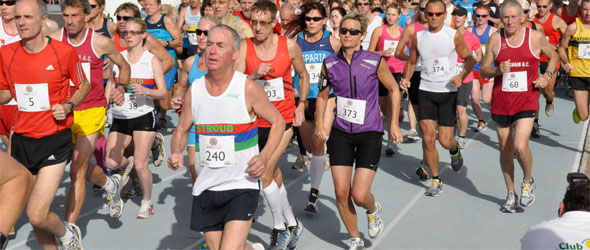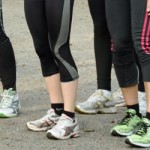The sport of putting one foot in front of the other as fast as possible has existed for thousands of years but was largely restricted to individuals who spent most of their time competing at a highly competitive level.
It is only since mid-seventies that people from all walks of life have found jogging/running has become their favorite way of staying in good physical health and maintaining their desired level of fitness.
Unfortunately, too many aspiring runners suffer needlessly because they do not understand some of the key ingredients that help alleviate unnecessary discomfort and allow them to experience the “runner’s high” that everyone talks about.
If you pass some of these people you will no doubt shudder at their anguish. Glazed eyes focused intently ahead like zombies.
Fists clenched. Jaws tightly closed and veins in the neck looking like they’re about to rupture.
When you pass with a kindly “hi,” you are rewarded with a face as long as a horse’s and the real feeling the intrepid athlete is only a nano-second away from pouncing on you because you forced him or her out of a trance and back to the reality of pain, discomfort and overall torture.
The following comments may allow these stoic souls to move into another “zone” where the journey really can be as much or more satisfying than the actual destination.
Tip 1: Get some decent running shoes that are designed for your own feet — not your wife, husband, son or daughter. Check whether you supinate, pronate or have a high instep. Heavier athletes generally need more cushioning and many potential speed demons will find that correctly fitted orthotics can help tremendously. More expensive does not necessarily mean a better shoe for you so go somewhere with qualified staff that can answer your questions honestly and intelligently without the priority being your fiscal potential.
Tip 2: Warm-up slow and easy and finish strong. Don’t stretch until you’ve finished your run and even then go easy on those joints and muscles. I see some people stretch like it’s the last day, resembling the wishbone from last Christmas’s turkey about to be snapped (ouch!).
Tip 3: If you’re trying to increase your speed and want to do interval work, try hill running instead of the track. Work the climb, backing off on the level and downhill sections. There is much less chance of injury and the aerobic system can be challenged at higher levels with less skeletal stress.
Tip 4: We live in an amazing environment with trails everywhere so whenever possible get on a soft surface to reduce pounding and potential injury. Failing that you can always purchase some gel insoles for your running shoes, which definitely helps reduce the impact.
Tip 5: Join a club. We are social creatures (well most of us anyway) and are usually happy interacting with other members of our species.
Tip 6: If you find you get blisters, just grease the offending area with vaseline before you start. It only takes a moment but can really impact on your overall comfort. You can also toughen your skin by applying rubbing alcohol on a regular basis to vulnerable skin areas (no drinking it though… hic!). Micropore is another good option, particularly if a blister is already starting to form.
Tip 7: Make it fun and interesting by varying your training environment — incorporate trails, city parks and seawalls.
Tip 8: Listen to your body. As you become increasingly athletic you’ll be more attuned to your own physiology and will learn when to pull back or take a brief break and hit the swimming pool.
The single easiest way for any athlete, recreational through elite, to become faster and stronger is not to get injured.
These are just some of the ideas that can help you enjoy, challenge and reward yourself in this wonderful athletic arena. They say if you can’t enjoy running in South Africa you won’t enjoy it anywhere so do some of the right things and sign up for the next local 5km, 10km, half marathon or whatever.
You’ll never look back!
Article by the late Dave Spence





























Hi there I recently completed my first ultra marathon (city to city) 50k in a time of 6hrs35 .it was an awsome route tough and undulating .I was hoping to do it in 6 hrs but i had metatarsil problems which I will be sorting out shortly . I have become totally addicted to running its awsome . I have only been running since June this year . plse can you guys post or email me strengthening exercises so I can become stronger and quicker .
thankyou
Brett
Hi Brett, you could consider reading our Strength section – http://www.time-to-run.com/strength
the basic Strength Training Routine – http://www.time-to-run.com/strength/strength1.htm is a very good place to start
TheEd
Thanks for the post. I think I like number 1. the best. The other day in a race I ran up to an gnarly old timer who had been running a descent clip and rolled his ankle. On closer inspection most of his gear was as old as him. Socks that had lost all their elastic and shoes, shirts and shorts that looked liked they had been worn for several decades. Worth buying good gear if you ask me. It may stop an injury or two.